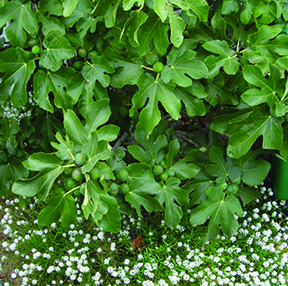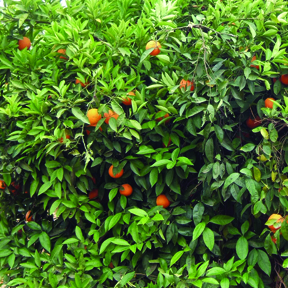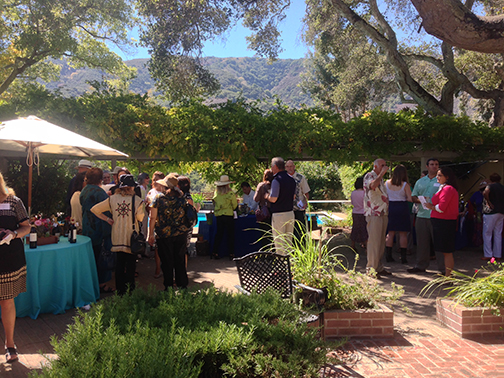
Brandon Wiggins, Science Writer at Large
What is fertilizer? Simply put, fertilizer combines the nutrients that plants need to grow—potassium, nitrogen, and phosphorus—in a form they can digest. Think of it as plant food.
As crops grow, they absorb, or mine, nutrients from the soil. When crops are harvested, so too are the nutrients that were absorbed by the plants. Commercial fertilizers nourish the soil by returning the “food” that next year’s crop will require.
Nitrogen is a key element in protein. Like the human body, plants need it to grow. Phosphorus is the plant world’s equivalent of carbohydrates—it provides the energy for plants to thrive. And potassium is a mineral that helps plants fight stress and disease. It helps plants grow strong stalks, in the same way that calcium gives people strong bones.
Are there chemicals in fertilizer? The three main ingredients in fertilizer—nitrogen, potassium, and phosphorus—come from nature. They are not man-made. Fertilizer companies simply convert them into a form that plants can use.
Fertilizer producers can blend nutrients into precise combinations to match the unique needs of different farms, crops, and fields. In this way, farmers can feed their soils with the most effective and efficient blend of potassium, phosphorus, and nitrogen to achieve optimal yields.
Do farmers need to use fertilizer? In a word, yes. Every season, plants draw from the soil the nutrients they need to grow. When a crop goes to market, so too does the potassium, phosphorus, and nitrogen it has absorbed and used throughout the growing season. When farmers fertilize, they put back into the soil the nutrients their next crop will require.
Soils do not naturally contain all the nutrients that crops need. And while some of the same nutrients in fertilizer are found in soil, they are not present in a sufficient supply for today’s high-yield farming.
It can take years—even decades—for nutrients to build up in the levels necessary to nurture a good crop. A single season can wipe out many years’ worth of naturally produced nutrients. Fertilizers give Mother Nature a helping hand.
Where does phosphorus come from? Phosphorus used in fertilizers comes from the fossilized remains of ancient marine life found in rock deposits in the U.S. and other parts of the world. This raw ore is processed to create water-soluble compounds that make the phosphorus available to plants as a nutrient.
Phosphorus helps early plant health and root growth. It is involved in seed germination and ensuring plants use water efficiently. Phosphorus is the plant world’s equivalent of carbohydrates—it provides the energy that a plant needs to grow.
Where does potassium come from? Potassium is the seventh most abundant element in the earth’s crust. Through natural processes it is filtered into the planet’s seas and oceans. As these bodies of water evaporate over time, they leave behind mineral deposits. Fertilizer companies mine potassium from these deposits.
Potassium is a mineral that helps crops fight stress and disease. It helps plants grow strong stalks, in the same way that calcium gives people strong bones.
Where does nitrogen come from? The air around us contains huge amounts of nitrogen. In fact, nitrogen makes up about 78% of the atmosphere. Fertilizer producers combine nitrogen with natural gas to change it into a form that plants can digest.
Nitrogen is nitrogen, whether it’s used by plants, animals, or people. It is a key element in protein. Like the human body, plants need nitrogen to grow. Often used in greater amounts than other nutrients, nitrogen helps make plants green and plays a major role in boosting yields.
What are the essential mineral nutrients?
- Macronutrients: nitrogen, phosphorus, potassium, calcium, magnesium, and sulphur
- Micronutrients: boron, chloride, copper, iron, manganese, molybdenum, nickel, and zinc
- Essential or beneficial for some plant species, not all: silicon, sodium, and cobalt
- Essential for animals but not for plants: selenium

FERTILIZER AND FOOD
What role do fertilizers play in feeding a growing world population? Fertilizers play a huge role in helping feed the world. Thanks to modern fertilizers, world food production has more than doubled since 1960. Today, an estimated one-third to one-half of our global food supply is directly linked to use of commercial fertilizers.
If we are to meet growing demand for food, however, we will need to double our current levels of production. We can’t do that without fertilizers. Just to match current production, we’d have to put into production every available acre outside urban areas—including forests, wildlife habitats, and leisure areas.
In Canada, an estimated 40% of yield increases achieved by farmers are a direct result of commercial fertilizers. Continuing to make better and more efficient use of fertilizer will help us feed the planet.
What would happen to food prices without fertilizer?

One of the biggest benefits from efficient fertilizer use is inexpensive food. Worldwide, one in three people can neither grow nor afford to buy enough food. With the help of commercial fertilizer, North American farmers are able to produce the most abundant, nutritious, and affordable food on the planet. In fact, it’s one of the main reasons why people on this continent spend less for food than any other nation on earth.


